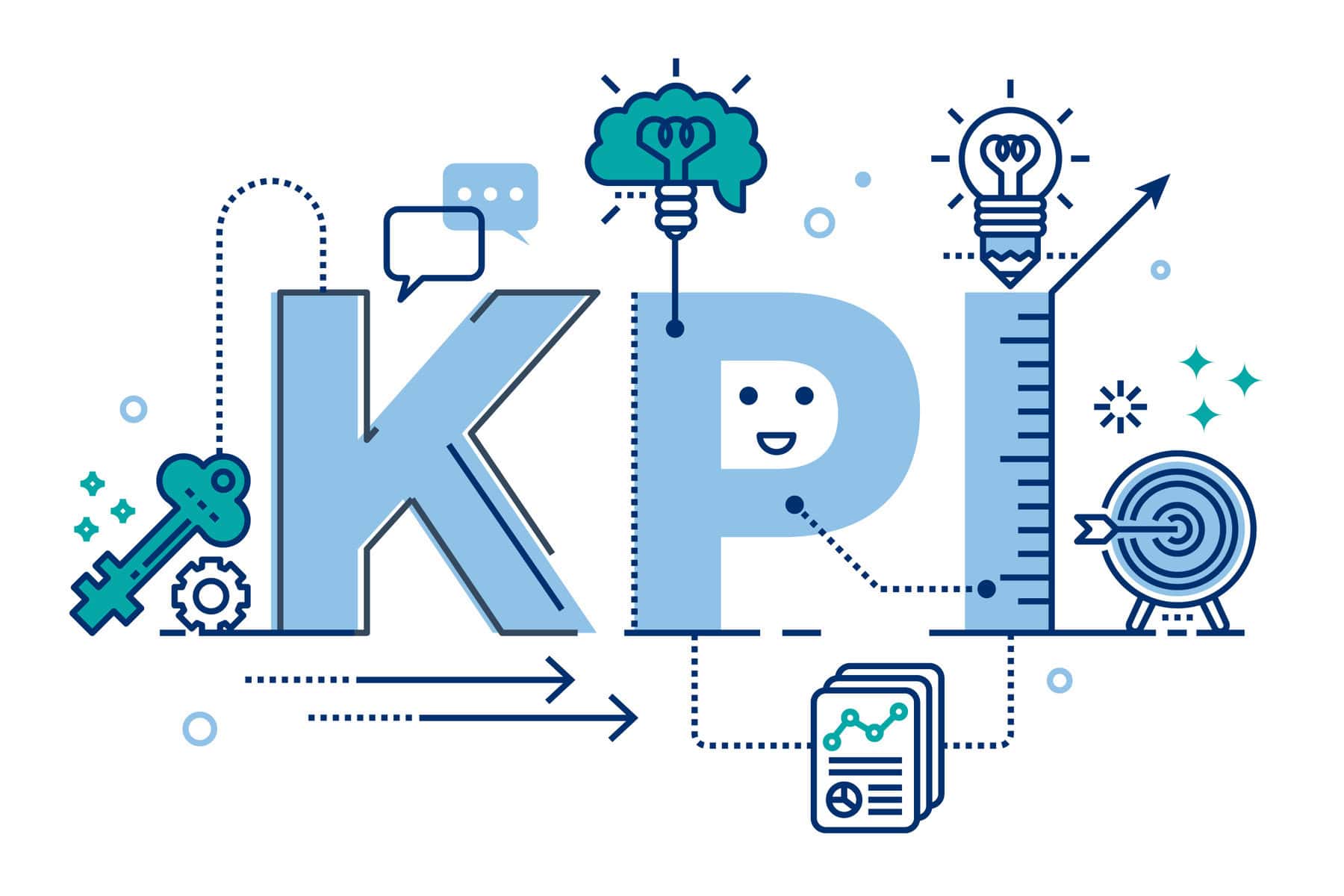Understanding and leveraging key performance indicators (KPIs) is crucial for driving growth and ensuring the success of your MSP business. For those new to or have limited experience in modern digital marketing, focusing on the right KPIs can help streamline efforts and maximize impact. Here are the top 10 KPIs every MSP CEO or sales leader should track, ranked by importance.
Customer Acquisition Cost (CAC)
 Understanding how much it costs to acquire a new customer is fundamental. This KPI helps you evaluate the efficiency of your marketing and sales efforts. To calculate CAC, divide the total marketing and sales expenses by the number of new customers acquired in a specific period. A high CAC can indicate that your strategies need refining, while a lower CAC suggests effective marketing and sales processes.
Understanding how much it costs to acquire a new customer is fundamental. This KPI helps you evaluate the efficiency of your marketing and sales efforts. To calculate CAC, divide the total marketing and sales expenses by the number of new customers acquired in a specific period. A high CAC can indicate that your strategies need refining, while a lower CAC suggests effective marketing and sales processes.
Why It Matters: CAC provides insight into the effectiveness of your customer acquisition strategies. By analyzing this KPI, you can identify which channels and campaigns deliver the best return on investment. For instance, if digital marketing campaigns on LinkedIn yield lower CAC compared to Google Ads, you can allocate more of your budget to LinkedIn.
How to Improve:
- Optimize your marketing funnel to reduce friction points.
- Invest in targeted marketing to reach more qualified leads.
- Improve your sales process to increase conversion rates.
Customer Churn Rate
Retaining customers is just as important as acquiring new ones. The churn rate measures the percentage of customers who leave your service over a given period. To calculate the churn rate, divide the number of customers lost during a period by the number of customers at the beginning of the period. A high churn rate can signal dissatisfaction and highlight improvement areas like customer service, product quality, or value perception.

Why It Matters: A high churn rate can significantly impact revenue and growth. Retaining customers is often more cost-effective than acquiring new ones. Moreover, loyal customers are more likely to refer your services to others, acting as brand advocates.
How to Improve:
- Enhance customer support and response times.
- Regularly gather customer feedback to identify pain points.
- Offer loyalty programs or incentives for long-term customers.
Monthly Recurring Revenue (MRR)
 MRR is the lifeblood of any MSP, providing a consistent revenue stream. To calculate MRR, multiply the number of monthly subscribers by the average revenue per user (ARPU). Tracking MRR helps you predict future revenue and assess the health of your business. Increasing MRR indicates growth and stability, allowing you to make more accurate financial forecasts, invest in new initiatives, and manage cash flow effectively.
MRR is the lifeblood of any MSP, providing a consistent revenue stream. To calculate MRR, multiply the number of monthly subscribers by the average revenue per user (ARPU). Tracking MRR helps you predict future revenue and assess the health of your business. Increasing MRR indicates growth and stability, allowing you to make more accurate financial forecasts, invest in new initiatives, and manage cash flow effectively.
Why It Matters: MRR provides a clear picture of your business’s financial health and growth trajectory. It helps forecast revenue, budget, and financial planning. A steady increase in MRR indicates business growth and customer retention.
How to Improve:
- Upsell and cross-sell additional services to existing customers.
- Implement tiered pricing plans to cater to different customer needs.
- Focus on acquiring long-term contracts rather than one-time sales.
Lead Conversion Rate
This KPI measures the percentage of leads that convert into paying customers. To calculate the lead conversion rate, divide the number of conversions by the total number of leads and multiply by 100. A high conversion rate indicates that your sales and marketing strategies are effective, while a low rate suggests issues in your lead nurturing process.
Why It Matters: Lead conversion rate directly indicates the effectiveness of your sales and marketing efforts. A higher conversion rate means your marketing messages resonate with your target audience, and your sales team successfully closes deals.
How to Improve:
- Qualify leads more effectively to focus on high-potential prospects.
- Enhance your sales training programs to improve closing techniques.
- Use data-driven marketing strategies to target your audience better.
Customer Lifetime Value (CLV)
CLV estimates the total revenue a business can expect from a single customer account. To calculate CLV, multiply the average purchase value by the average purchase frequency rate and then by the average customer lifespan. By understanding CLV, you can make more informed decisions about how much to invest in acquiring and retaining customers.
Why It Matters: CLV helps you understand the long-term value of your customers, which is crucial for making informed marketing and sales investment decisions. It provides insight into the potential profitability of customer relationships and helps prioritize customer retention efforts.
How to Improve:
- Increase customer satisfaction to extend the customer lifespan.
- Implement loyalty programs to encourage repeat business.
- Offer value-added services to increase average purchase value.

Sales Growth Rate
Monitoring your sales growth rate helps you understand the pace at which your business is expanding. To calculate the sales growth rate, subtract the sales at the beginning of the period from the sales at the end of the period, then divide by the sales at the beginning and multiply by 100. Steady growth is a positive indicator of business health and can attract potential investors and partners.
Why It Matters: Sales growth rate is vital to business expansion and market acceptance. Consistent growth suggests that your products and services meet market needs and that your business is scaling effectively.
How to Improve:
- Invest in training and development for your sales team.
- Diversify your product or service offerings.
- Expand into new markets or customer segments.
Average Revenue Per User (ARPU)
ARPU measures the average revenue generated per user or customer. To calculate ARPU, divide the total revenue by the number of customers. This KPI helps you understand the revenue contribution of each customer and can guide pricing and sales strategies. A higher ARPU indicates that your customers find significant value in your services and are willing to pay more, boosting overall profitability.

Why It Matters: ARPU provides insights into the revenue potential of your customer base and helps you identify opportunities for revenue growth. It can guide pricing strategies, service enhancements, and customer segmentation decisions.
How to Improve:
- Introduce premium pricing tiers with additional features.
- Bundle services to increase the overall value proposition.
- Regularly review and adjust pricing strategies based on market demand.
Cost per Opportunity (CPO)
CPO measures the cost associated with generating a sales opportunity. To calculate CPO, divide the total marketing and sales expenses by the number of new opportunities created. Keeping this cost low while maintaining high-quality leads is essential for efficient marketing and sales operations. Monitoring CPO helps you optimize your budget allocation and focus on the most effective strategies for generating new business.
Why It Matters: CPO helps you understand the financial efficiency of your lead generation efforts. By keeping CPO low, you ensure that your marketing budget is used effectively, maximizing the return on investment for your sales opportunities.
How to Improve:
- Optimize your marketing campaigns to target high-quality leads.
- Use data analytics to refine your lead generation strategies.
- Leverage automation tools to streamline lead management processes.

Customer Satisfaction Score (CSAT)
CSAT gauges how satisfied your customers are with your services. To measure CSAT, ask customers to rate their satisfaction on a scale (typically 1-5 or 1-10) and calculate the average score. High customer satisfaction is crucial for retention and referrals, significantly impacting your business’s growth. Regularly collecting and analyzing CSAT data allows you to identify areas for improvement and ensure that your services meet customer expectations.
Why It Matters: High customer satisfaction leads to customer loyalty, repeat business, and positive word-of-mouth referrals. CSAT provides direct customer feedback, helping you address issues promptly and improve service quality.
How to Improve:
- Implement regular customer feedback surveys.
- Act on customer feedback to improve service delivery.
- Train your staff to enhance customer interactions and service quality.
Gross Margin
Gross margin indicates the percentage of revenue that exceeds the cost of goods sold (COGS). To calculate gross margin, subtract COGS from total revenue, divide by total revenue, and multiply by 100. This KPI helps you understand the profitability of your services and is essential for financial health and planning. A higher gross margin indicates that your pricing strategy is effective and your costs are well-managed, contributing to the overall sustainability of your business.
Why It Matters: Gross margin is a crucial indicator of financial health and operational efficiency. It helps you understand how well your business manages its production costs relative to revenue, which is essential to long-term profitability.
How to Improve:
- Optimize operational processes to reduce COGS.
- Negotiate better terms with suppliers or vendors.
- Review and adjust pricing strategies to ensure profitability.
Conclusion
Ready to Supercharge Your MSP's Growth?

Discover how our expert services can transform your business:
- Tailored Marketing Plans: From foundational strategies to accelerated growth plans, we offer customized solutions to fit your unique needs.
- Comprehensive Analytics: Gain valuable insights and make data-driven decisions with our advanced reporting tools.
- Expert Support: Our dedicated team is here to guide you every step of the way, ensuring you achieve your business goals.
Take the next step toward success – Get Your Free Consultation Now.





